The Crusader was the first American fighter to break 1,000 miles per hour.
Well Armed Warrior
The F-8 earned its testosterone-besotted moniker because of its primary armament.
Where subsequent fighter planes were designed around missile engagements, the Crusader was first and foremost a gun platform.
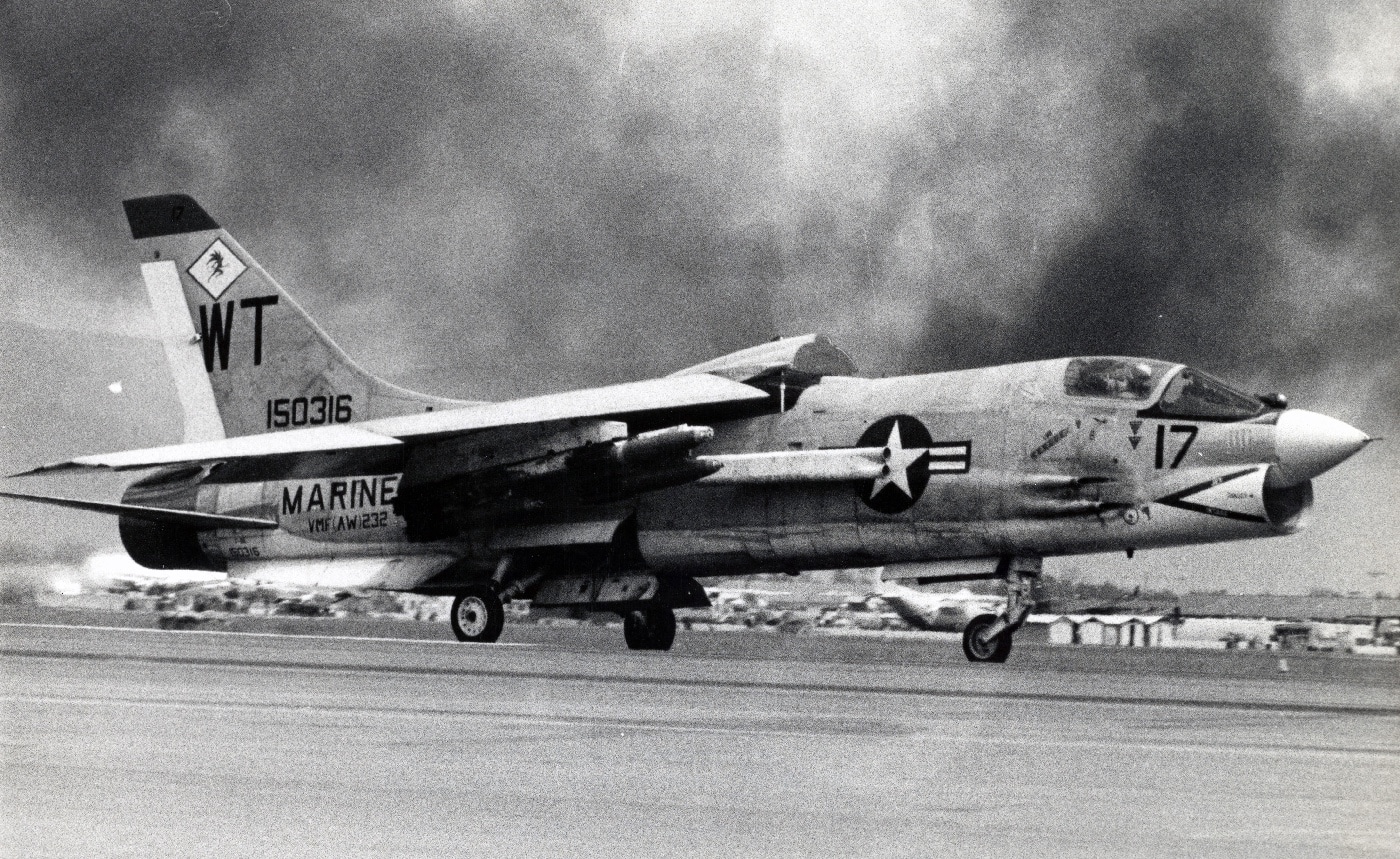
A U.S. Marine Corps F-8E Crusader launches on a March 10, 1967 scramble mission in support of ground forces 17 miles south of Da Nang, Vietnam. Image: U.S.M.C.
The F-8 carried four Mk 12 20mm autocannons in the lower fuselage packing 125 rounds apiece.
Each gas-operated gun weighed 101 lbs.
and cycled at 1,000 rounds per minute.
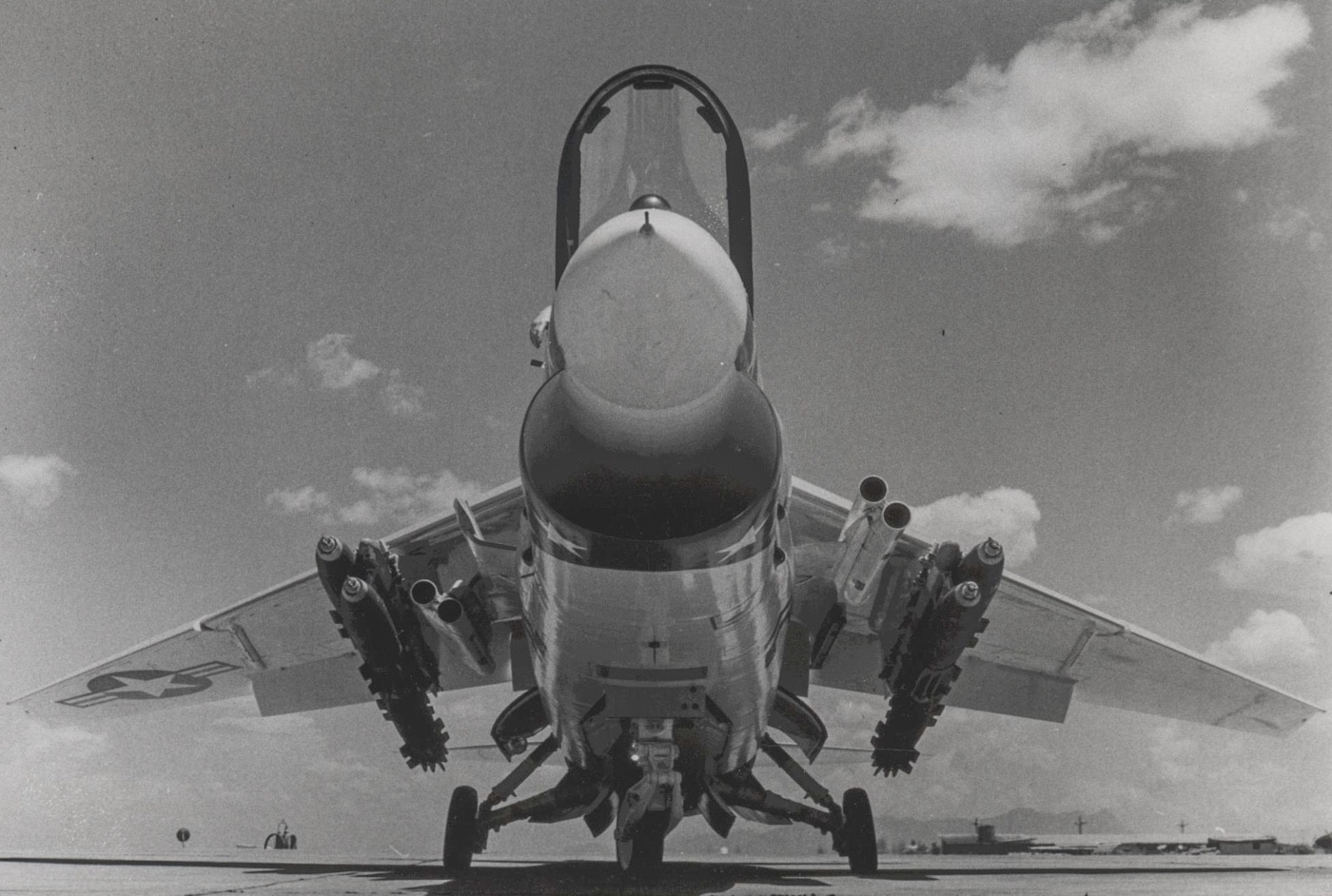
An ordnance-laden F-8E Crusader of Marine All-Weather Fighter Squadron 232 (VMF (AW)-232) stands ready on the flight line. Image: T. J. Mercurio/U.S.M.C.
This gave the Crusader a sum total of 7.5 seconds worth of fire for combat engagements.
Additionally, the F-8 could carry four AIM-9 Sidewinder air-to-air missiles on side-mounted fuselage pylons.
Uncle Sam called these nasty rascals the Mighty Mouse.
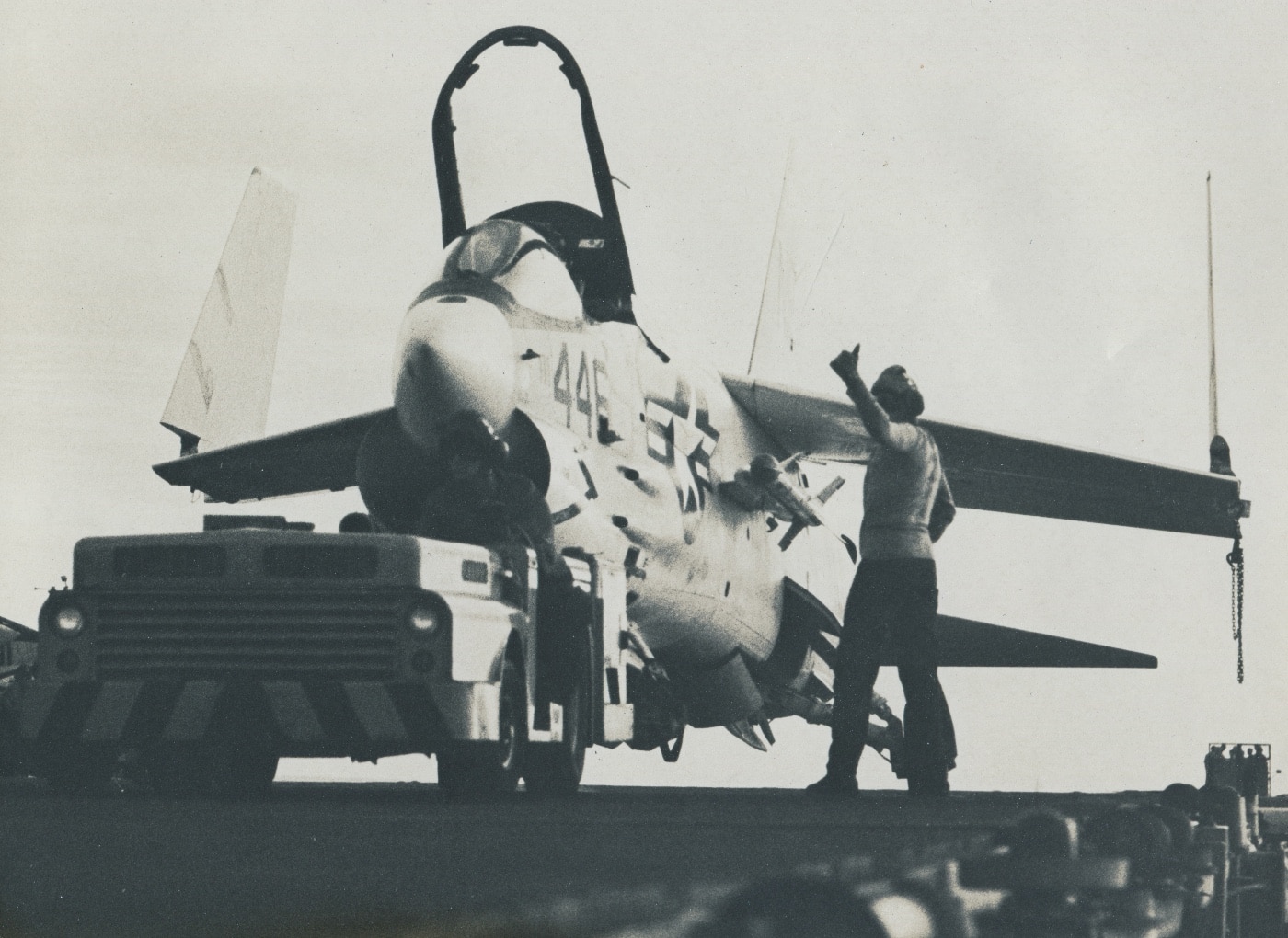
Flight deck boatswain signals mule driver to tow F-8 Crusader fighter aircraft to respot position aboard the attack aircraft carrier USSBon Homme Richard(CVA-31). Image: R.D. Moeser/U.S. Navy
The previous WWII-vintageChance-Vought F4U Corsair, magnificent plane that it was, well and truly sucked in this regard.
This made carrier landings, particularly in rough seas or periods of limited visibility, terribly hazardous.
The designers of the Crusader set out to rectify that.
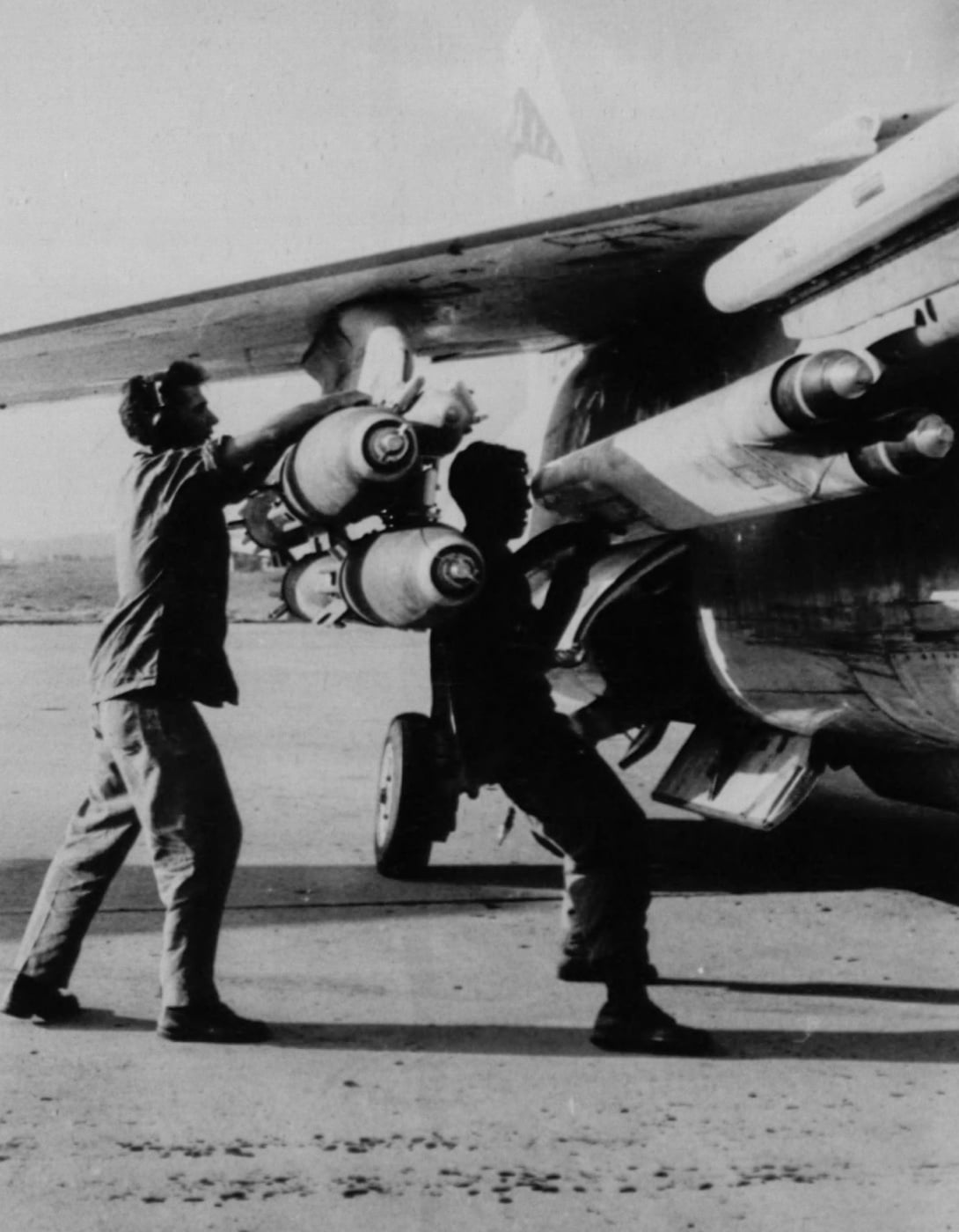
Marine Aircraft Group 11 ordnance men make last minute checks and arm the bombs and rockets on an F-8 Crusader fighter jet prior to its takeoff on a mission in Vietnam. Image: U.S.M.C.
Additionally, the cockpit was mounted well forward to afford superlative visibility on landing.
Lastly, the F-8 was equipped with a most remarkable wing.
Fast planes are more challenging to land than slow ones.
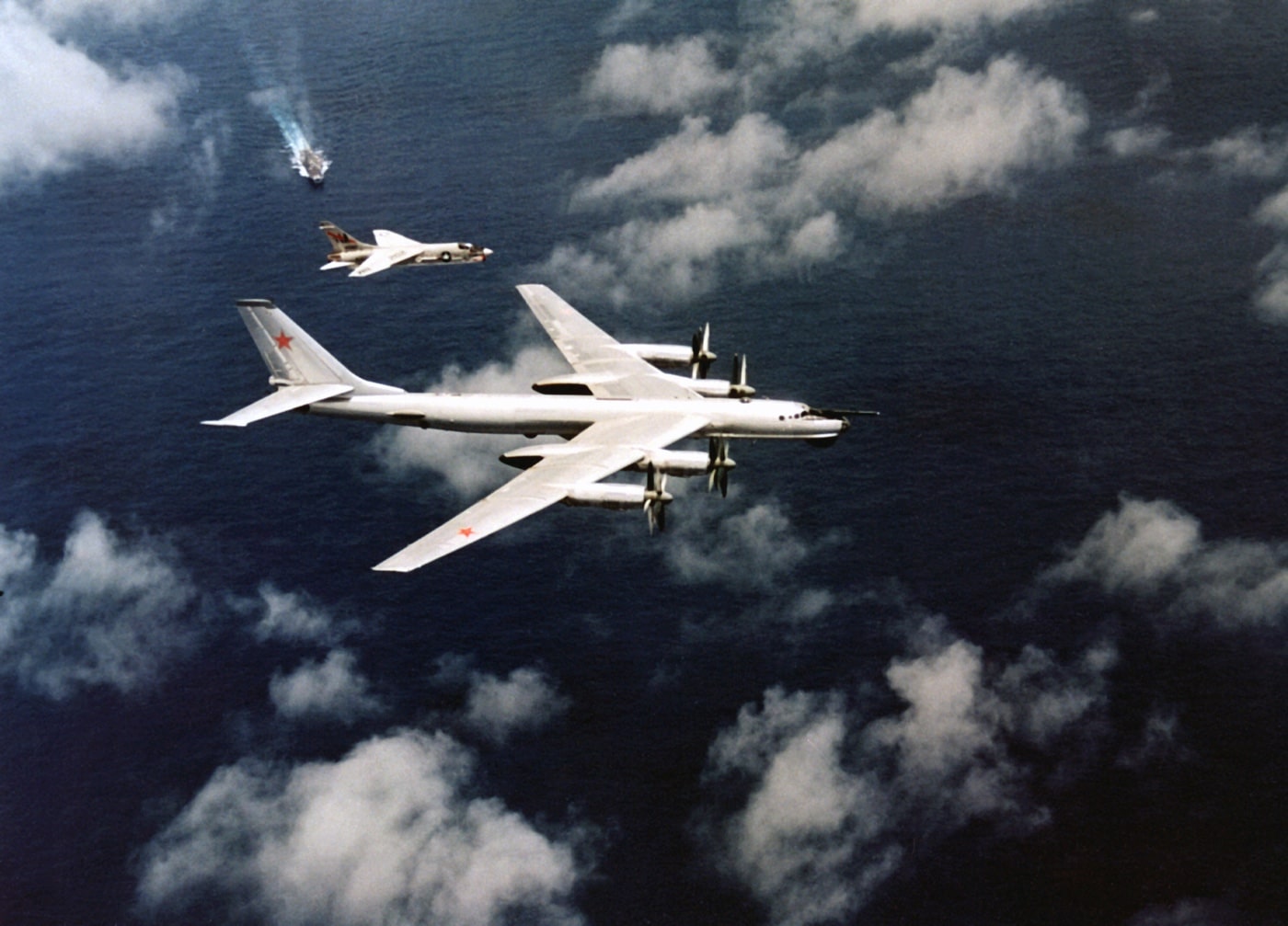
An F-8 Crusader fighter intercepts a Soviet TU-95 Bear-A/B aircraft near the aircraft carrier USSOriskany(CVA-34) on May 25, 1974. Image: NARA
In the case of the F-8 Crusader, the Navy stipulated a 100 mph approach speed.
The solution was a weird variable incidence wing structure.
For takeoff and landing, the entire wing assembly pivoted upward seven degrees.
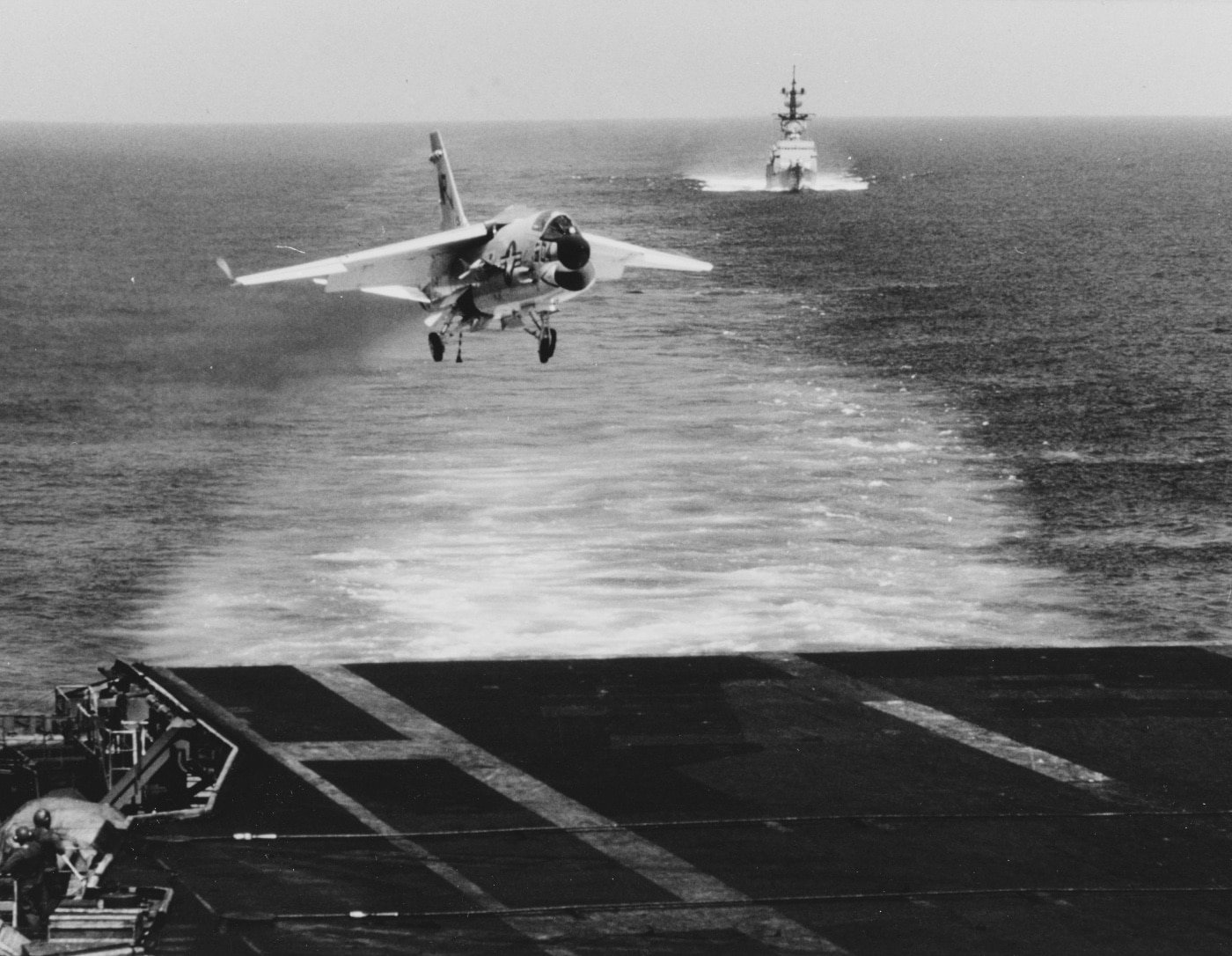
An F-8 Crusader lands on the attack aircraft carrier USSHancock(CVA-19) in the Gulf of Tonkin during the Vietnam War. Image: U.S. Navy
With all this stuff cleaned up after takeoff, the plane was trim, slick, and fast.
It really was an inspired solution.
The wingtips also folded for storage aboard ship.
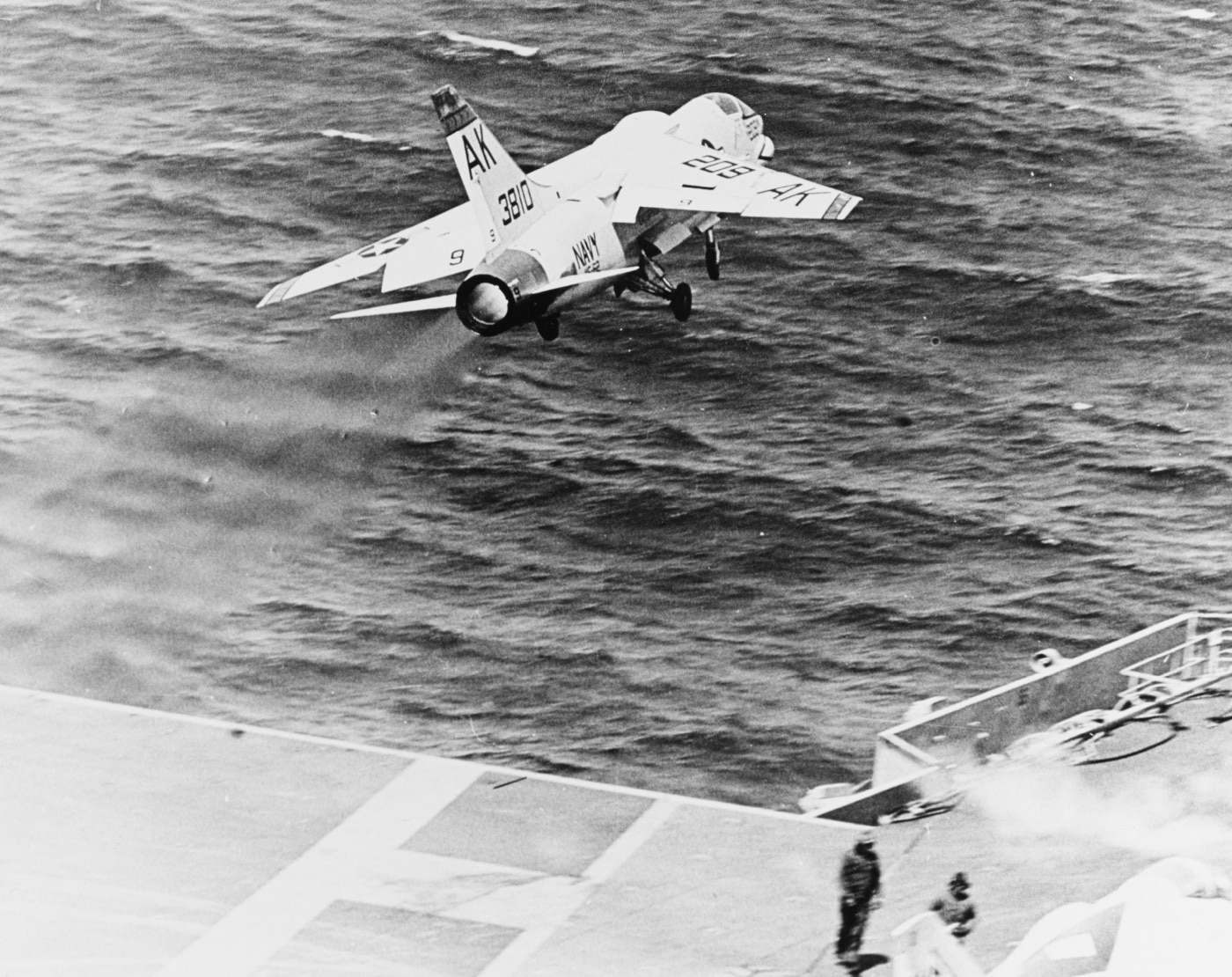
An F-8 Crusader, with afterburner aglow, is catapulted from the deck of USSEnterprise(CVN-65), during an air-power demonstration for President John F. Kennedy on April 14, 1962. Image: NARA
In addition, the Crusader employed one-piece stabilators in lieu of a conventional horizontal stabilizer with separate control surfaces.
Most all modern fighter aircraft have since followed this design path.
Operational Performance of the Crusader
The Crusader really made its mark during the Cuban Missile Crisis.
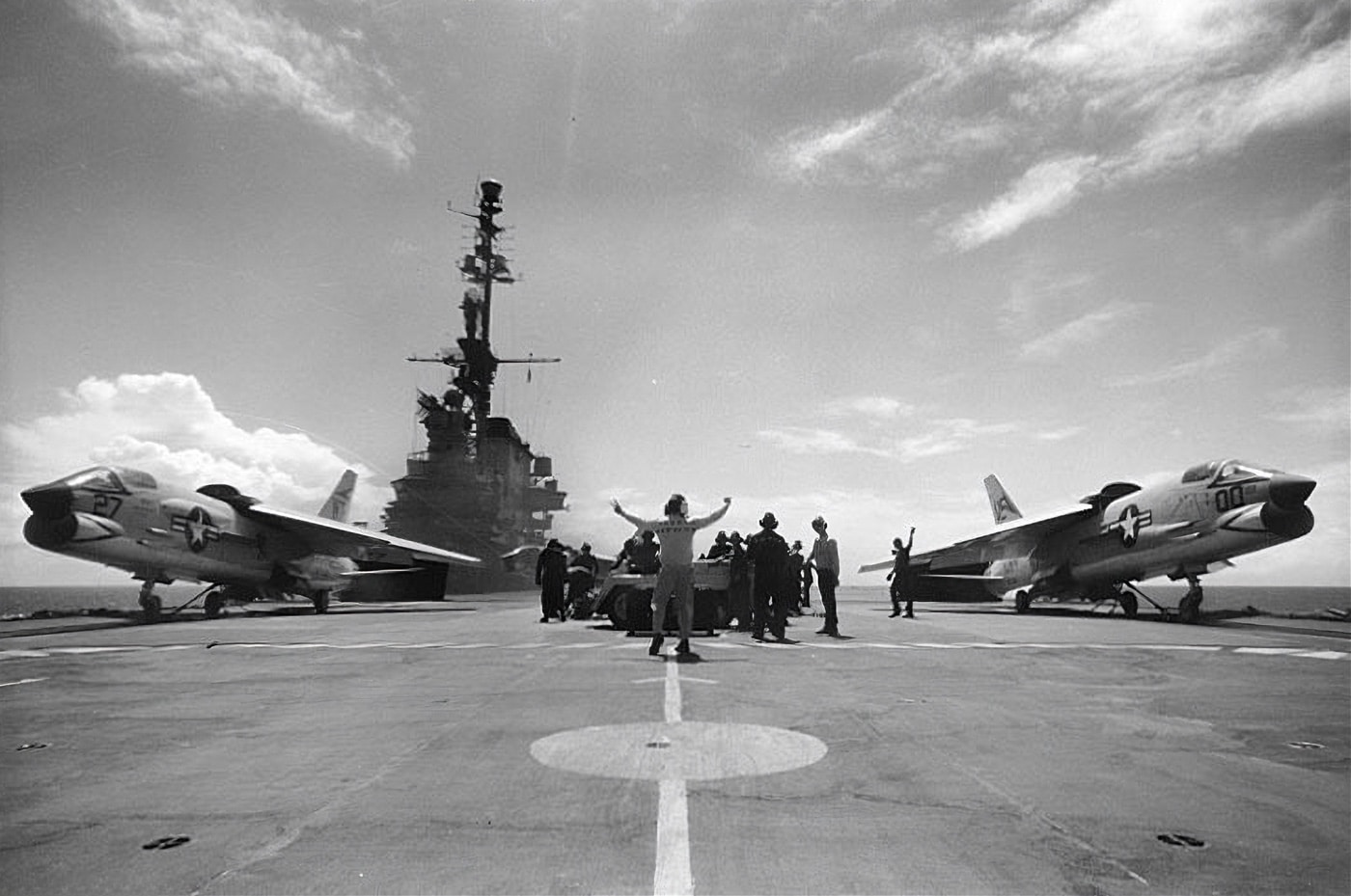
The crew of the USSMidway(CVA-41) prepare to launch a pair of F-8 Crusader fighters, during carrier qualifications in 1963. Image: U.S. Navy
RF-8A photoreconnaissance Crusaders lacked armament but carried powerful cameras that could be used to gather photographic intelligence.
The Crusaders high speed and exceptional maneuverability helped the pop in to survive fast runs through contested airspace.
These overflights produced some 160,000 images that substantively shaped national policy during this most critical time.
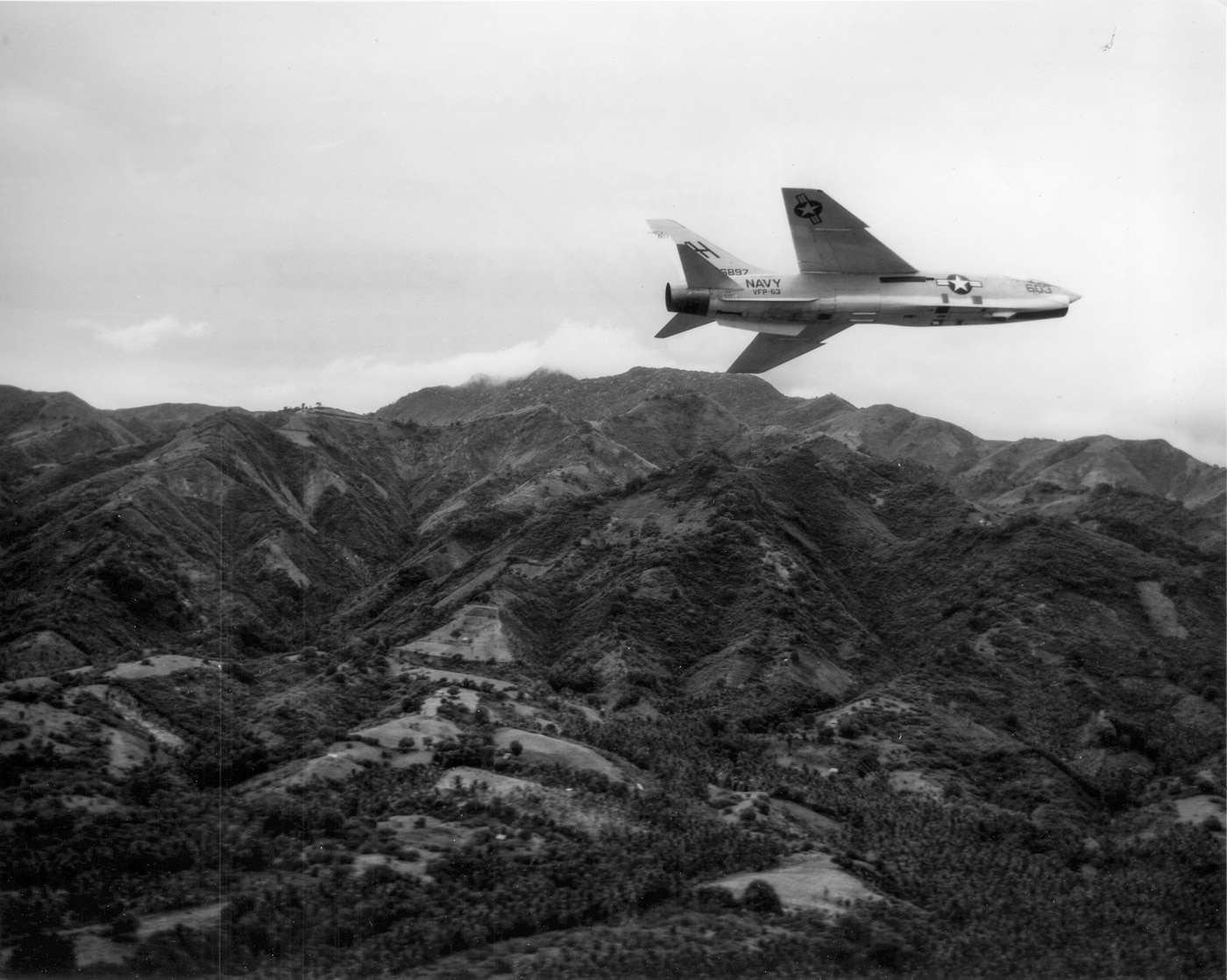
An RF-8G Crusader from Light Photographic Squadron 63 (CFP-63,) based aboard attack aircraft carrier USSOriskany(CVA-34), rolls in for a photo run over South Vietnam in July 1966. Image: U.S. Navy
In action, the Crusaders guns were not terribly reliable.
Of the 19 MiGs downed by Crusader pilots during the Vietnam War, four fell to cannon fire.
The rest were downed using AIM-9 Sidewinder heat-seeking air-to-air missiles.
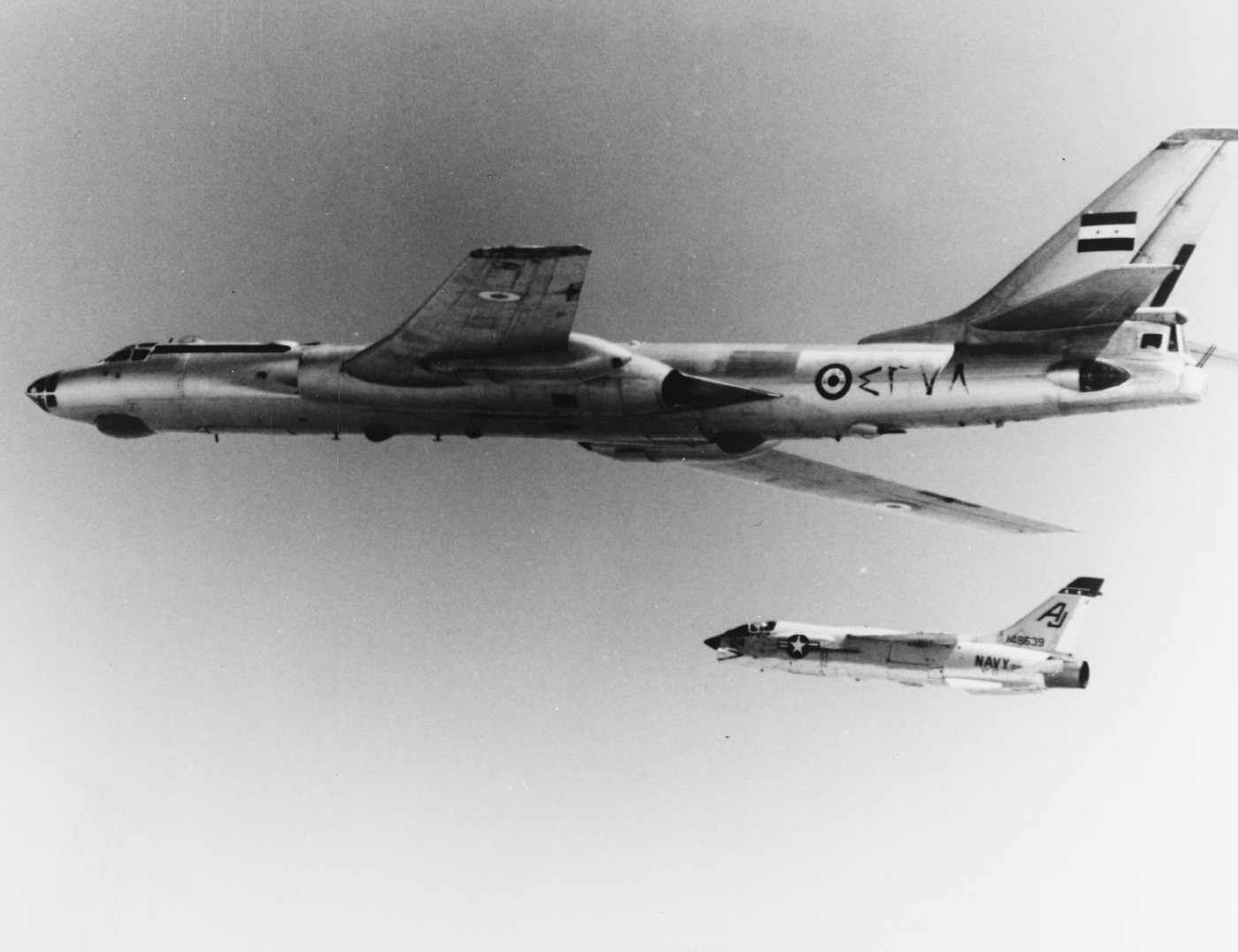
A Soviet-built TU-16 Badger of the Egyptian Air Force watches a NATO exercise in the Mediterranean Sea in 1969. It is escorted by an F-8 Crusader from the USSShangri-La(CVS-38). Image: U.S. Navy
At the time of its introduction, jet propulsion was still in its relative infancy.
Regardless, the Crusader did some amazing things.
There were several instances wherein pilots inadvertently launched with their wings folded.
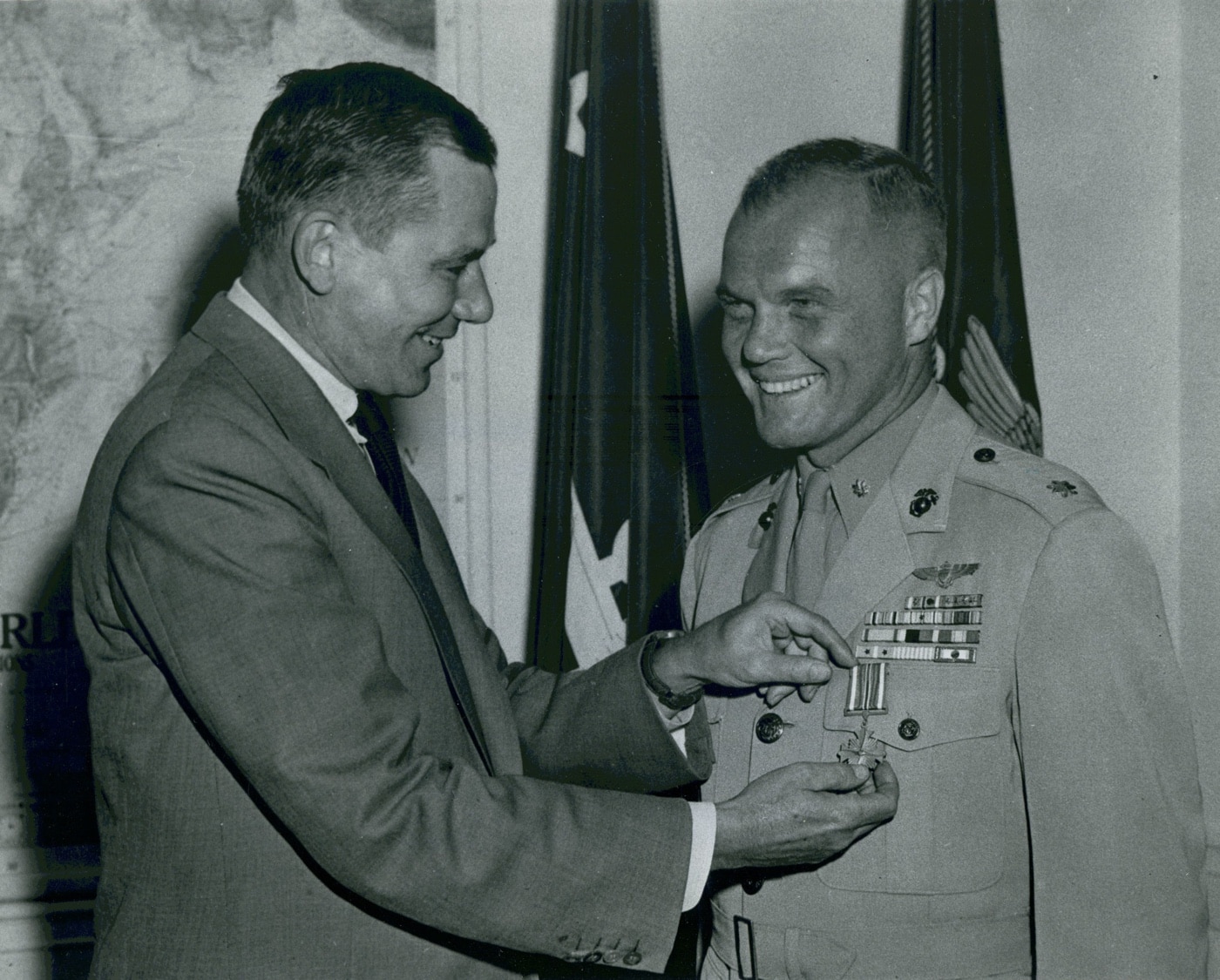
Maj. John H. Glenn, Jr., U.S.M.C., received the Distinguished Flying Cross from the Secretary of the Navy. Glenn used the F-8 to become the first person to cross the continent faster than the speed of sound.
Such performance speaks to the exceptional design of the Crusader and the innate foolishness of young military pilots.
Some 1,261 Crusaders were produced over its 30-year service life.
Despite such ghastly operational numbers, the Crusader was nonetheless a seminal steppingstone to even greater things to come.
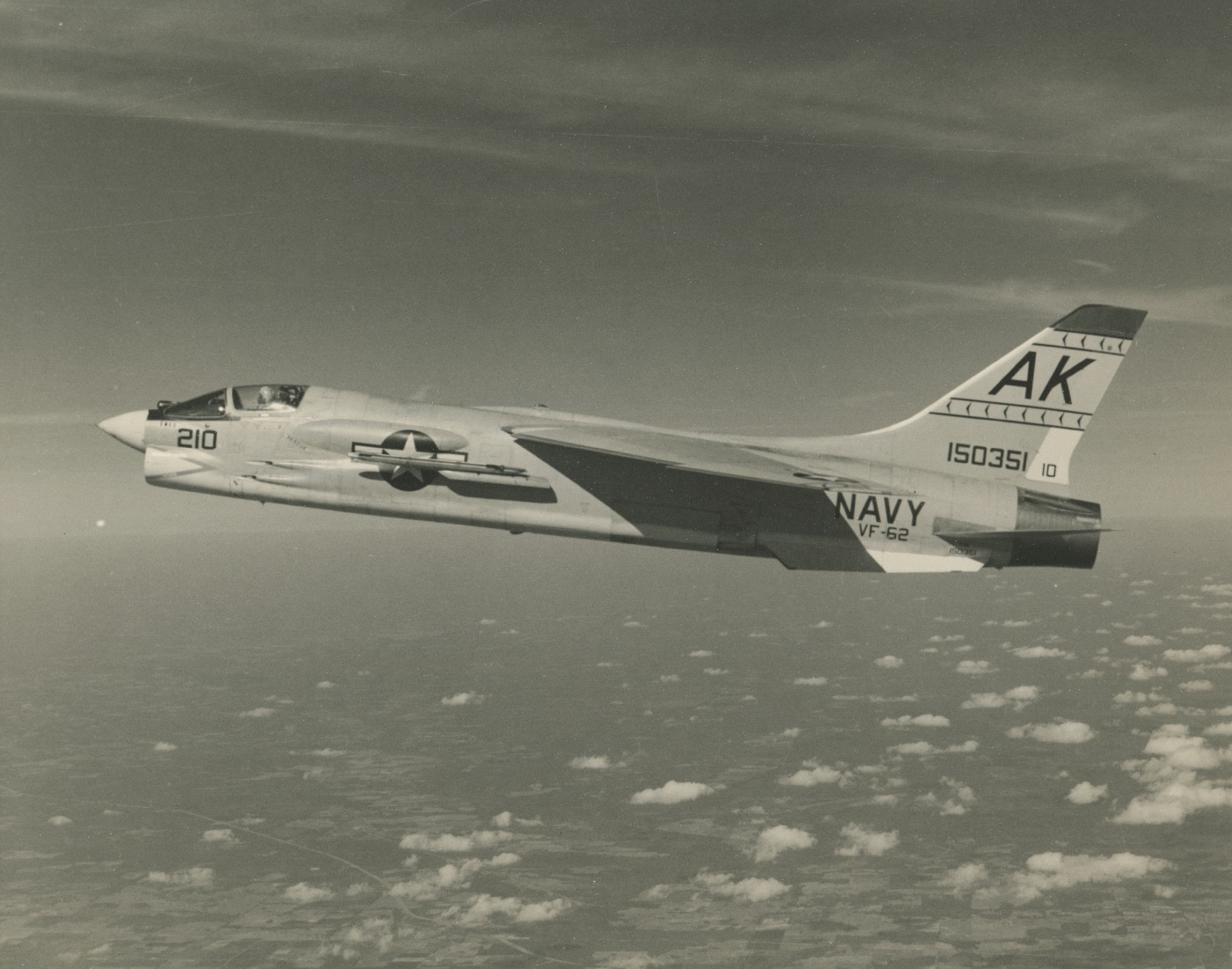
A left-side view of an F-8B Crusader of Fighter Wing 62 in flight on November 30, 1965. Image: Lt. j.g. Kay/U.S. Navy
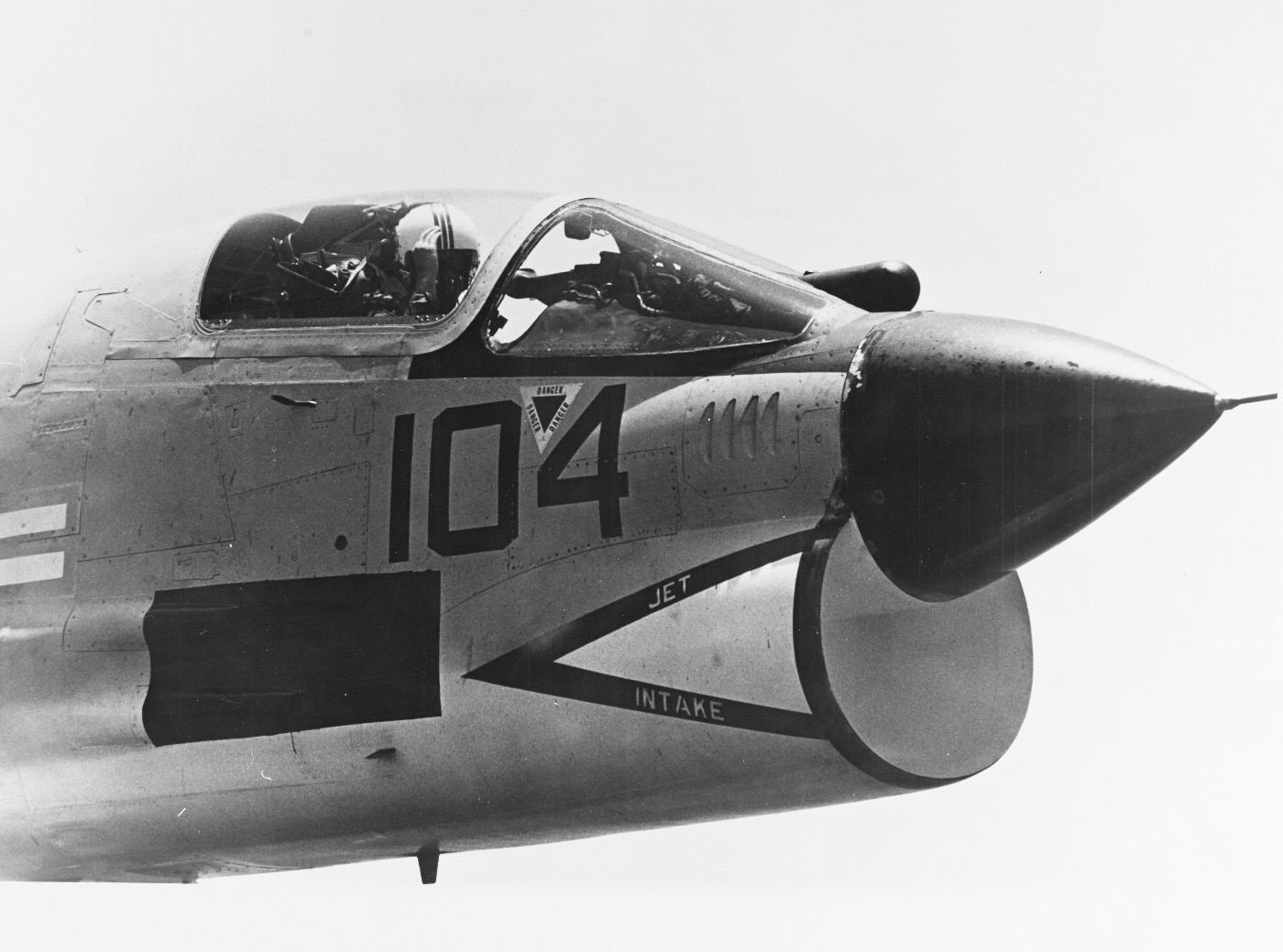
The pilot of an F-8 Crusader salutes, signaling he is ready to launch from the USSHancock(CVA-19) during operations in the South China Sea. Image: Chief Journalist R.D. Moeser/U.S. Navy




